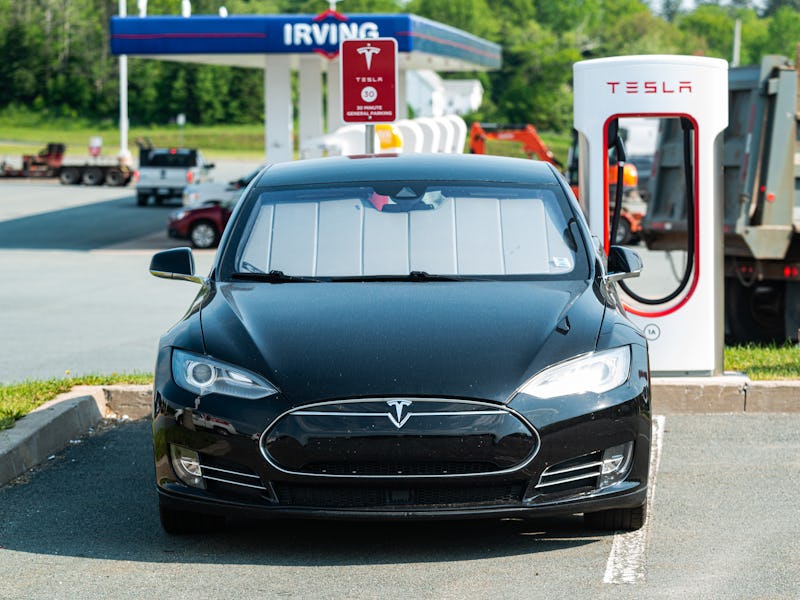Tesla: Elon Musk says he will break with a 200-year-old tradition in future electric cars
Tesla is moving away from using a tried and tested battery chemistry in its vehicles, and it shows how the landscape is changing.

Tesla aims to move away from using the tried-and-tested lead-acid 12-volt battery in its vehicles, CEO Elon Musk revealed Monday.
The CEO, responding to a question on Twitter about whether Tesla could install lithium-ion 12-volt batteries in its entry-level Model 3 and Model Y electric vehicles, replied: “We will try.”
“Preferable for Tesla too, as they last so long,” Musk wrote. “Unlike other makers of cars, our goal is *not* to profit from service. Best service is not needing service in the first place.”
Want to find out more about Tesla’s plans to supercharge vehicles? Subscribe to MUSK READS+ for exclusive interviews and analysis about all things Musk.
The switch would mean that the smaller 12-volt battery would use the lithium-ion chemistry employed in the car’s larger battery. Musk confirmed in a February 2021 with teardown expert Sandy Munro that the firm would start using lithium-ion 12-volt batteries in the Model S and Model X.
“It’s got way more capacity,” Musk said in February 2021. “The counter and cycle life match that of the main pack. We should have done it before now, but it’s great that we’re doing it now.”
Switching the Model 3 and Model Y would cover the firm’s whole lineup at the time of writing.
What is a 12-volt battery? — Modern cars — not just electric ones — come equipped with a 12-volt battery. This low voltage pack is used to power small accessories like the lights, in-car entertainment, and electric windows. It’s also used to get the car started.
Musk has spoken before about moving away from 12-volt batteries. In 2017 he suggested the Model Y could skip the battery entirely, but the car ultimately launched in 2020 with a 12-volt pack intact.
“It’s very much a vestigal voltage,” Musk said in the February 2021 interview, explaining how power over Ethernet cables could reach much higher voltages.
Why lead acid? — Although Tesla’s vehicles use lithium-ion for the main high voltage pack, Tesla’s 12-volt batteries have stuck with lead-acid chemistry. These were invented in 1859 and were a mainstay of cars in the 20th century.
Electric vehicle magazine Charged explained in August 2018 that lead-acid has remained a favorite because it’s incredibly widespread, resilient, and able to operate at a wide range of temperatures from minus 13 degrees Fahrenheit to 131 degrees.
But as teardown expert Sandy Munroe noted in his interview with Musk, lithium-ion cells hold a number of benefits. The box is smaller, which reduces wasted space. Using a cell that matches the life cycle of the main pack could also reduce the need to replace the 12-volt cell over the main battery’s lifespan.
The older cell did require maintenance. In September 2020, Electrek editor-in-chief Fred Lambert revealed that his Model X was on its fourth 12-volt battery after 400,000 miles of driving. Replacing the 12-volt battery cost Lambert $280.
The Inverse analysis — Musk is pushing hard for lithium-ion as the future of electric vehicles and clean energy. Last week, he declared that the technology alone would be enough to transition the world onto sustainable energy.
In September 2020, he unveiled a new battery cell designed to be easier than ever to manufacture. Tweaks to the production process would result in a 75 percent reduction in investment per gigawatt-hour. The firm is now aiming to produce three terawatt-hours of batteries per year by 2030.
Lead acid may have made sense in an earlier market, but as Tesla aims to rapidly boost its lithium-ion production, the market is shifting.
SUBSCRIBE TO MUSK READS+, A PREMIUM NEWSLETTER THAT COVERS THE WORLDS OF ELON MUSK, SPACEX, TESLA, AND EVERYTHING BETWEEN.